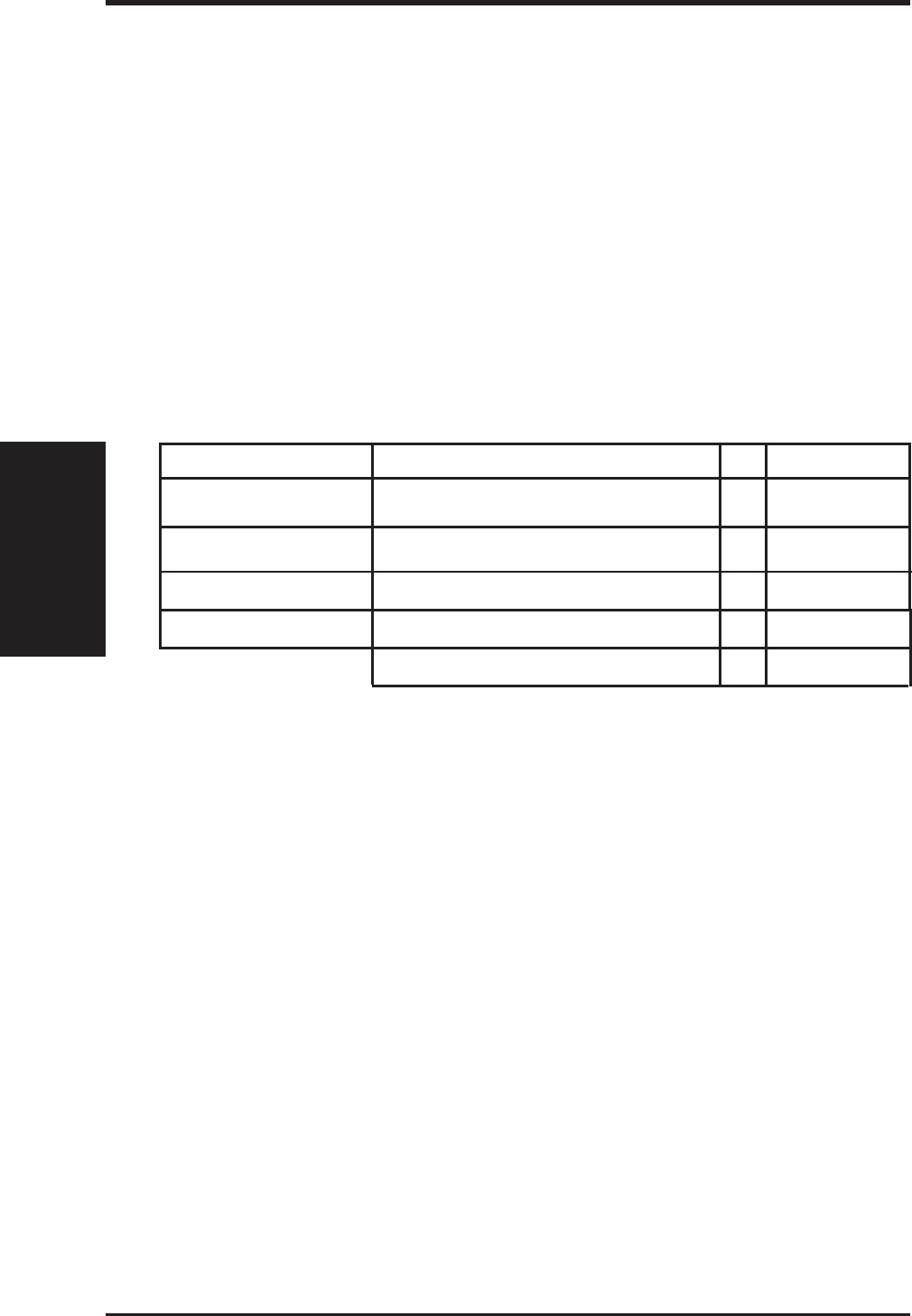
16 ASUS XG-DLS User’s Manual
III. INSTALLATION
Install memory in any combination as follows:
DIMM Location 168-pin DIMM Total Memory
Socket 1 (Rows 0&1) SDRAM 8,16,32,64,128,256,512MB x1
Socket 2 (Rows 2&3) SDRAM 8,16,32,64,128,256,512MB x1
Socket 3 (Rows 4&5) SDRAM 8,16,32,64,128,256,512MB x1
Socket 4 (Rows 6&7) SDRAM 8,16,32,64,128,256,512MB x1
Total System Memory (Max 2048MB) =
2. System Memory (DIMM)
This motherboard uses only Dual Inline Memory Modules (DIMMs). Sockets are
available for 3.3Volt (power level) unbuffered Synchronous Dynamic Random Ac-
cess Memory (SDRAM). One side (with memory chips) of the DIMM takes up one
row on the motherboard.
To utilize the chipset’s Error Checking and Correction (ECC) feature, you must use a
DIMM module with 9 chips per side (standard 8 chips/side + 1 ECC chip) and make
the proper settings through “Chipset Features Setup” in BIOS setup.
Memory speed setup is recommended through SDRAM Configuration under “Chipset
Features Setup” in BIOS setup.
General DIMM Notes
• For the system CPU bus to operate at 100MHz, use only PC100-compliant DIMMs
compatible with Intel’s PC100 SDRAM specifications. This motherboard operates at
100MHz, thus most systems will not even boot if non-compliant modules are used be-
cause of the strict timing issues involved under this speed. If your DIMMs are not PC100-
compliant, set the CPU bus frequency to 66MHz.
• Two possible memory chips are supported: SDRAM with and without ECC.
• SDRAM chips are generally thinner with higher pin density than EDO (Extended Data
Output) chips.
• BIOS shows SDRAM memory on bootup screen.
• 8 chips/side modules do not support ECC, only 9 chips/side modules support ECC.
• Single-sided DIMMs come in 16, 32, 64,128MB; double-sided come in 32, 64, 128, 256MB.
System Memory
III. INSTALLATION


















